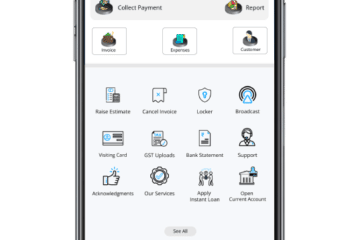6 tips for reconciling content and sales
After the training and digital equipment of sales representatives , we are continuing our series on Sales Enablement with marketing content.
As a reminder, Sales Enablement is the ongoing strategy that provides sales representatives with all the means necessary to engage their customers at each stage of the purchasing journey: digital tools, content, training, processes, information.
Although salespeople need content, 90% * of content produced by marketing is not being used. In return, the sales team loses 30 hours * per month looking for and creating their own content. However, if you are a marketer, you know that your content is a strategic issue. You spend a lot of resources in the production, storage and promotion of its content.
1. Bring your content together in one source
According to a study on the State of Inbound Marketing carried out by Hubspot, 68% of the companies questioned have 5 different storage spaces for their content. Drive, PIM, DAM, marketing automation, inboxes, personal files, the proliferation of storage spaces hamper the use of content. They no longer know where to look and especially where to find what they need.
Depending on your organization, you may not be able to bring all of your content together in one source. However, try as much as possible to build a single library, with a simple nomenclature for ease of research. Also make sure the content is accessible. Sales reps need to have the content they need at all times, regardless of the context.
2. Standardize your content
According to a Quark study , 80% of companies surveyed believe that marketing is the source of content production. Yet according to the same study, the sales team produces 40% of the company’s content, compared to 30% for the marketing teams. As a result, you can end up with duplicates and lose productivity and efficiency. In addition, you increase the risk of altering your messages or your brand image.
To standardize them and ensure a harmonized brand image, ask your salespeople to send you the content they use. You can update them, send them the right information. You will thus gain collaboration and confidence.
Take this opportunity to carry out a complete audit of the existing one. You will finally know which content is useful, used or obsolete.
3. Collaborate with your sales representatives
To ensure that your content is used, collaborate with your salespeople. As has been said, content is a great help for the sales team in order to engage their customers. Yet, as a marketer, you often haven’t seen clients on dates for a long time. So you can produce content that you think is relevant but ultimately turns out to be unusable for sale.
Before you jump into creation, ask your sales reps what their needs are in terms of relevant content and how they use its content. You can also make updates once they are made available by collecting feedback from your sales representatives.
It will also be an opportunity to update your buyer persona based on their feedback. Thus, you will continuously have the prospect knowledge necessary to target your content.
4. Get out of the “marketing” content and “commercial” content separation
Often, it’s mistakenly thought that marketing only produces content for brand awareness, promotion, or the early stages of the buying journey. Often this dissonance comes from an apriori: an inbound marketing strategy would only serve to generate leads. However, blog posts, white papers, social media posts, can be reused by sales reps. Indeed, it is informative content that can also train them on their market, sector news, or their expertise. Used in front of a prospect, they represent a way to prove their expertise when necessary.
In addition, as part of a social selling or employee advocacy strategy, salespeople can reclaim marketing content to publish on social media, engage in conversation with their client and strengthen their posture as an expert and salesperson. “consultant”.
5. Inform sales reps about content production
Often linked to a lack of alignment between marketing and sales teams, sales reps are simply not informed when new content is available.
However, whether it is blog articles, the update of the sales presentation or new product sheets, your sales representatives must be able to know the extent of the content they have. Whether by newsletter, emails, internal messaging, do not neglect the communication on the production of content with salespeople. Content is a great pretext for more alignment between marketing and sales. Some of the sale businesses are final expense leads, car insurance leads and telemarketing leads
6. Analyze the performance of your content
Once you’ve gathered your content in one place, collaborated with your sales reps on it, and educated them, it’s time to analyze their performance to find out which content is effective. You can follow for example:
- documents opened by sales representatives
- documents sent to prospects
- documents viewed by prospects
- establish links between open rate and conversion rate
Thus, thanks to a quantified follow-up, you deepen the effectiveness of the sales and marketing actions. You can focus your efforts on content that is relevant to your prospects.
In conclusion, your content strategy is directly linked to your Sales Enablement strategy. By bringing together marketing and sales teams, you not only align goals but improve your sales effectiveness.


















